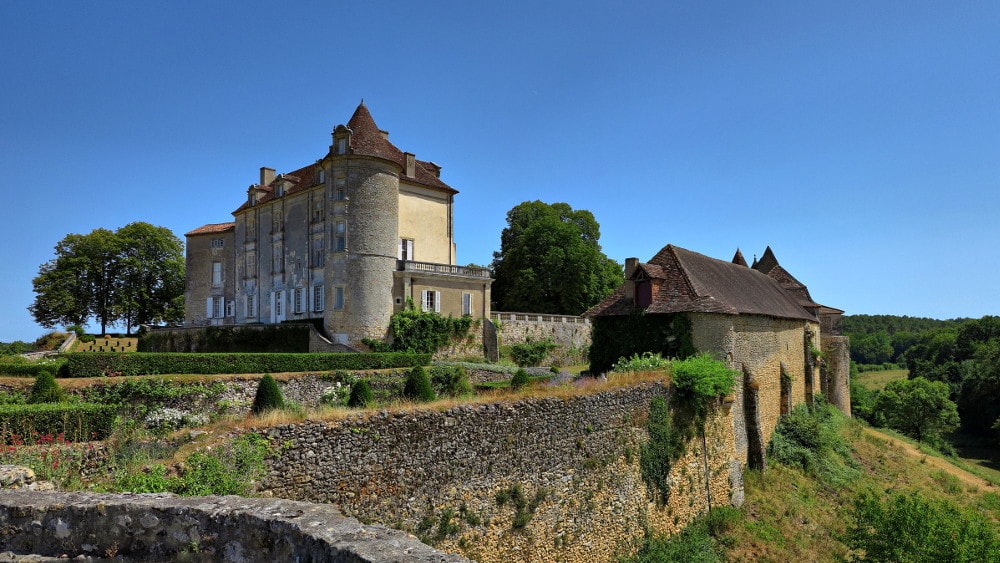Castle of Montreal
★★★☆☆
Attribution: By JGS25 (Own work) [CC BY-SA 4.0 (http://creativecommons.org/licenses/by-sa/4.0)], via Wikimedia Commons
The Castle of Montreal is more of a grand house than a castle, but together with the gardens, it makes a very attractive site.
History
The castle was originally built in the 12th century but much of its structure was destroyed during the Hundred Years' War. The present structure was built by the Pontbriand family in the 16th century. They modernized the double walls of the ramparts, added a Renaissance style facade and built the Sainte-Epine chapel.
An interesting historical event occurred in 1535. Claude de Pontbriand, who was the owner of the castle at that time, accompanied the French explorer Jacques Cartier on an expedition to discover the New World. He renamed an Indian settlement called Hochelaga after his chateau; this settlement grew to be the second biggest city in Canada !
The castle today
The gardens around the castle were built at the beginning of the 20th century. First, there is a small medieval inspired garden, then an Italian style garden, featuring hibiscus, yew trees, and walls covered with roses. The upper part consists of a French style garden, lovely positioned above the valley.
The rear of the chateau has the 16th-century Renaissance facade, while the front facade is much simpler in style, resembling the style of the original castle. The interior rooms have lots of wooden decorations painted in pale pastel colors. The round tower houses a charming library and on the other side of the courtyard, there is a beautiful church and stable block.
History
The castle was originally built in the 12th century but much of its structure was destroyed during the Hundred Years' War. The present structure was built by the Pontbriand family in the 16th century. They modernized the double walls of the ramparts, added a Renaissance style facade and built the Sainte-Epine chapel.
An interesting historical event occurred in 1535. Claude de Pontbriand, who was the owner of the castle at that time, accompanied the French explorer Jacques Cartier on an expedition to discover the New World. He renamed an Indian settlement called Hochelaga after his chateau; this settlement grew to be the second biggest city in Canada !
The castle today
The gardens around the castle were built at the beginning of the 20th century. First, there is a small medieval inspired garden, then an Italian style garden, featuring hibiscus, yew trees, and walls covered with roses. The upper part consists of a French style garden, lovely positioned above the valley.
The rear of the chateau has the 16th-century Renaissance facade, while the front facade is much simpler in style, resembling the style of the original castle. The interior rooms have lots of wooden decorations painted in pale pastel colors. The round tower houses a charming library and on the other side of the courtyard, there is a beautiful church and stable block.